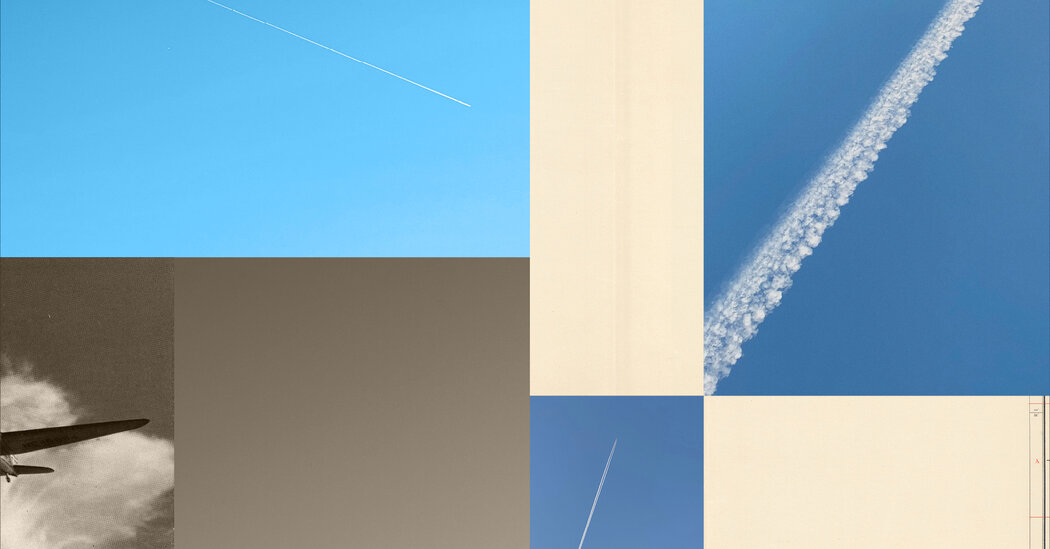I spend most days working from home, in my apartment in San Francisco’s Richmond District. When the morning fog has burned off, I throw on a hoodie and go for a walk. I head up a hill to a lookout spot from which I can survey the sky. It has become a daily ritual, a way to gauge my mood and remind myself of the scale of my concerns. One recent day, I walked to my perch and watched a plane make its way west, leaving behind it a silver thread. My flight-tracking app revealed this to be a Boeing 787-9 Dreamliner, traveling from Los Angeles to Tokyo. By the time it landed, its contrail still lingered in the sky above San Francisco.
Some people enjoy watching clouds, but I prefer contrails, those chalky lines left in the wake of aircraft at high altitudes, where the temperature and vapor pressure are low. The plane’s engines expel their hot, humid breath, which cools and condenses in the air, similar to how exhaling in cold weather creates a cloud of condensation. NASA lists three types of contrails: short-lived ones that form directly behind planes as they fly, then dissipate quickly; persistent, nonspreading trails that maintain their narrow form but can linger a long time; and persistent spreading trails that can fan out to cover a wide area.
On clear days, the resulting contrails are stark and white, accentuating the sky’s watery blue. At sunset, they’re cast in a dreamy golden shade. To me, their beauty derives in part from their incongruity with the sky’s naturally occurring features. The marks themselves are incidental — a quirk of atmospheric physics — but they sometimes seem like characters I follow in an otherwise impersonal sky. I recently took a photo of a trail following a plane flying above the Sutro Tower, rising from the city’s heart. Though the aircraft was at cruising altitude, the earth’s curvature made it appear to be flying diagonally, its nose pitched to the sun. Its movement made it seem cheeky, touched by an aura of optimism.
There is an uncanniness to contrails, a sense of something both familiar and alien — a cloud that seems to be imparting a message, if only we could decode it. At a residency that I attended recently in the Pacific Northwest, my fellow artists and I gathered outside the lodge before dinner to marvel at a thick, puffy band of white stretching all the way from one end of the sky to the other. The trail was so bold and assertive against an otherwise cloudless sky that we felt darkly intrigued, and…
Click Here to Read the Full Original Article at NYT > Travel…
